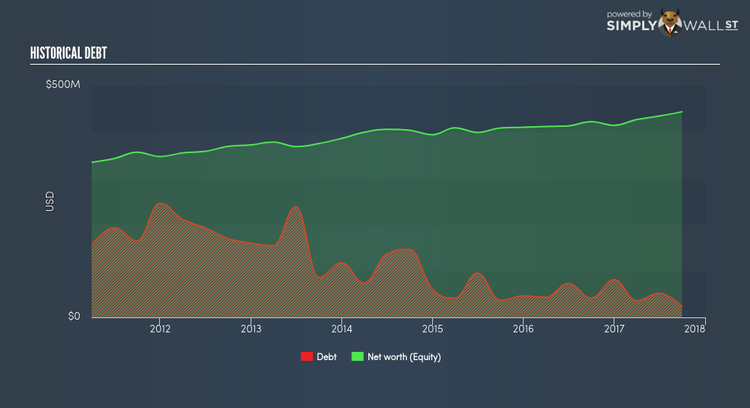Should You Be Concerned About First Financial Corporation’s (NASDAQ:THFF) Liquidity?

As a small-cap finance stock with a market capitalisation of USD $556.79M, the risk and profitability of First Financial Corporation (NASDAQ:THFF) are largely tied to the underlying economic growth of the region it operates in US. Since a bank profits from reinvesting its clients’ deposits in the form of loans, negative economic growth may lower deposit levels and demand for loan, adversely impacting its cash flow. Post-GFC recovery brought about a new set of reforms, Basel III, which was created to improve regulation, supervision and risk management in the financial services industry. The Basel III reforms are aimed at banking regulations to improve financial institutions’ ability to absorb shocks caused by economic stress which could expose banks like First Financial to vulnerabilities. Unpredictable macro events such as political instability could weaken its financial position which is why it is important to understand how well the bank manages its risk levels. Sufficient liquidity and low levels of leverage could place the bank in a safe place in case of unexpected macro headwinds. Today we will be measuring First Financial’s financial risk position by looking at three leverage and liquidity metrics. See our latest analysis for First Financial
Why Does THFF’s Leverage Matter?
Banks with low leverage are exposed to lower risks around their ability to repay debt. A bank’s leverage can be thought of as the amount of assets it holds compared to its own shareholders’ funds. Financial institutions are required to have a certain level of buffer to meet capital adequacy levels. First Financial’s leverage level of 7x is significantly below the appropriate ceiling of 20x. This means the bank has a sensibly high level of equity compared to the level of debt it has taken on to maintain operations which places it in a strong position to pay back its debt in unforeseen circumstances. If the bank needs to firm up its capital cushion, it has ample headroom to increase its debt level without deteriorating its financial position.
What Is THFF’s Level of Liquidity?

Since loans are relatively illiquid, we should know how much of the bank’s total assets are comprised of these loans. Normally, they should not exceed 70% of total assets, which is the case for First Financial’s ratio at 61.92%. This is a reasonable ratio and suggests that slightly over half of the bank’s total assets are tied up in the form of illiquid loans, striking an appropriate balance between liquidity and interest income.
Does THFF Have Liquidity Mismatch?
Banks operate by lending out its customers’ deposits as loans and charge a higher interest rate. These loans may be fixed term and often cannot be readily realized, however, customer deposits are liabilities which must be repaid on-demand and in short notice. This mismatch between illiquid loans and liquid deposits poses a risk for the bank if unusual events occur and requires it to immediately repay its depositors. Since First Financial’s loan to deposit ratio of 75.27% is within the sensible margin, below than the appropriate maximum of 90%, this level places the bank in a relatively safe liquidity position given it has not excessively lent out its deposits and has maintained a suitable level for compliance.
Final words
First Financial ticks all the boxes for operational prudency in terms of liquidity and leverage. These factors often sideline next to other fundamentals but are equally important to consider as part of the investment thesis. The bank’s favourable liquidity and leverage position exposes it to less risk when it comes to repaying financial obligations, in particular, in the case of an adverse macro event. Keep in mind that a stock investment requires research on more than just its operational side. Below, I’ve compiled three pertinent aspects you should look at:
1. Future Outlook: What are well-informed industry analysts predicting for THFF’s future growth? Take a look at our free research report of analyst consensus for THFF’s outlook.
2. Valuation: What is THFF worth today? Has the future growth potential already been factored into the price? The intrinsic value infographic in our free research report helps visualize whether THFF is currently mispriced by the market.
3. Other High-Performing Stocks: Are there other stocks that provide better prospects with proven track records? Explore our free list of these great stocks here.
To help readers see pass the short term volatility of the financial market, we aim to bring you a long-term focused research analysis purely driven by fundamental data. Note that our analysis does not factor in the latest price sensitive company announcements.
The author is an independent contributor and at the time of publication had no position in the stocks mentioned.

